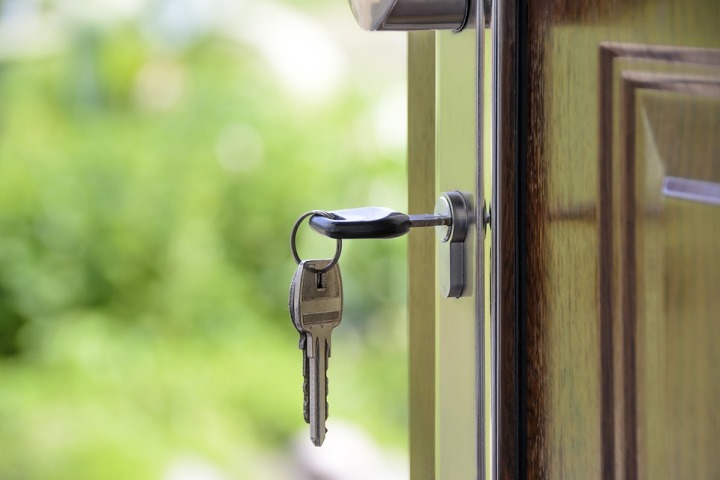Govt's model guidelines for retirement homes prescribe elderly friendly environment
The Guidelines provide an option to senior citizens and family members, who are willing and can afford to purchase a living space for their parents.

- Country:
- India
Sh Hardeep S Puri, Minister of State(I/C) for Housing and Urban Affairs has informed that the model guidelines for development and Regulation of Retirement Homes which have been prepared by his Ministry prescribe an elderly friendly built environment, physical standards and specifications. Providing details of the guidelines he informed that the Model Guidelines address the special needs and protect the rights of senior citizens and retirees living in Retirement Homes who aspire to spend their retired life independently in a safe, secure and dignified environment. The Guidelines provide an option to senior citizens and family members, who are willing and can afford to purchase a living space for their parents. The guidelines state that:
Retirement Homes should be aligned with the Principles, Guidelines, Norms etc. as prescribed in ‘National Building Code’ (NBC), ‘Model Building Bye-Laws’ and ‘Harmonized Guidelines and Space Standards for Barrier Free Built Environment for persons with Disability and Elderly Persons’.
Elderly friendly built environment like lifts with audio and visual signage and signalling systems, wheelchair accessibility, mandatory ramps, design of spaces to enable barrier-free movement, anti-skid tiles in bathrooms and stairs, elderly friendly design of door-knobs, handrails, furniture, etc., kitchens with gas leak detection systems, power back up facilities in corridors, lobby, lifts and apartments.Compliance with Green Building Principles as provided in Model Building Bye-Laws and use of non-polluting and renewable energy.
Provision of common basic services like 24X7 water and electricity supply, maintenance of proper hygiene, indoor and outdoor recreation facilities, security and housekeeping, single window facilities and helpdesk, transportation assistance, yoga and fitness facilities, caregiving facilities, etc.
Provision of basic medical, safety and security services like 24x7 on-site ambulance service, mandatory tie-up with emergency facilities with the nearest hospitals and pharmacy, medical emergency room, regular medical check-up of residents, emergency alarm systems, trained and skilled security personnel, CCTV cameras in common areas, prior police verification of all the personnel deployed in the Retirement Homes.
Customised services over and above the basic common services like internal and external housekeeping, managing dining services, assistance with legal services, etc., if required by the residents have also been prescribed.
From approximately 7.6 crores in 2001, the number of senior citizens in India has increased to 10.4 crores in 2011. This number is expected to grow to 17.3 crores by 2025 and about 24 crores by 2050. By the end of the century, senior citizens will constitute nearly 34 per cent of the total population of the country.
The salient features of these Model Guidelines are:
Keeping in view the requirement of independent lifestyle choice, these Guidelines provides that any person can buy such apartments but has to be solely used by a senior citizen.
A resident of Retirement Homes will be any person who is 60 years of age or above.
Promoter/ Developer can build and manage the Retirement Homes or engage a ‘Service Provider’ or ‘Retirement Home Operator’ for management of Retirement Homes. Such Service Providers will be required to be registered with appropriate State Authorities.
building category under ‘Residential’ land use in respective Master/Zonal/Local Area Plans, determination of requirement of land as per demand survey, indicative size of dwelling unit ranging from 30 sq.mt to 60 sq.mt., Group Housing norms in hilly and plain areas with minimum plot sizes of 1,500 sq.mt and 3,000 sq.mt respectively, open space up to 65% of the site area, minimum 15 sq.mt. per 25 Dwelling Units (DUs) space standards for the medical emergency room. Flexibility is given to States/UTs to modify the planning norms as per the local geographical and another related parameter.
To encourage participation of promoter/ developer and financial institutions to develop such projects enhanced Floor Area Ratio (FAR) is proposed.
Transparency in fund utilisation
Provision of a twofold mechanism in the form of refundable Interest-Free Maintenance Security Deposit (IFMS) and Maintenance Charges. IFMS to be paid by the Allottee which is refundable within a maximum period of three months from the date of refund application. Maintenance Charges to be paid by the resident on lump-sum or monthly/ quarterly/ yearly instalments on mutually agreed terms.
Regulation of Retirement Homes
Retirement Home apartments can only be sold after registration under the respective Real Estate (Regulation and Development) Act (RERA) of the States/Union Territories. To protect the rights of the residents a list of ‘Basic Rights of the Allottee/Resident of a Retirement Home’ has been stipulated.
The Model Guidelines provides for disclosure of technical skill of the Service Provider at the time of executing the ‘Agreement to Sale’ in the form of a ‘Tri-Partite Agreement’ to be executed among the Developer, Service Provider /Retirement Home Operators and Allottee.
To ensure implementation of the Guidelines, a Task Force for constant dialogue with States/UTs and other stakeholders will be set by the Ministry of Housing and Urban Affairs (MoHUA).
Setting up of appropriate Monitoring Committees by the State/UT Authorities for timely implementation of all applicable laws, regulations, rules and guidelines governing the Retirement Homes, under the supervision of MoHUA.The Model Guidelines will encourage inclusive growth wherein States/UTs are required to review and align their policies and regulations and institutionalise appropriate mechanisms on Retirement Homes.
The Model Guidelines will enable all States/UTs to align their policies and regulations in line with these Model Guidelines to ensure the protection of rights of the senior citizens and promote a dignified life after retirement. The implementation of these Guidelines will boost investment in the Retirement Home segment, contribute to employment generation in service sector industries associated with Retirement Homes.
(With Inputs from PIB)










